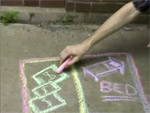 Course: Spanish 30: Introduction to Hispanic Studies. I. Middle Ages to 17th Century
Course: Spanish 30: Introduction to Hispanic Studies. I. Middle Ages to 17th Century
Instructor: Prof. Noelia Cirnigliaro
Assignment: A Visual Essay
Why and what for we have final video project in Spanish 30.Introduction to Hispanic Studies. I. Middle Ages to 17th Century?
In understanding the historical myths that condition Early Modern Spanish and current Spanish imaginaries, we have studied historian Henry Kamen’s latest book Imagining Spain. Historical Myth and National Identity (2008). The myths discussed in his work and in our course are the following: “The myth of a Historical Nation”, “The Myth of an Empire”, “The Myth of a Christian Spain”, “The Myth of a Universal Language”, “The Myth of the Inquisition”, “The Myth of the Failed Monarchy” and “The Myth of Perpetual Decline”. We are studying clusters of texts in relation to one myth at a time. The purpose of the visual essay is that students understand even better, but also try out, test, and evaluate the pertinence to these historical myths (and, of course, of Henry Kamen’s assertions) in relation to a different text that we have not discussed in association with student’s chosen myth. For their final video projects, then, students will explore the connection between a core question about the culture of Spain and Latin America, then and now, and only one literary piece from Medieval, Early Modern Spain, or Colonial Latin America. All in all, these videos should work as a collective visual essay, with a hypothesis and a series of arguments and evidence (discussion of historical information, close readings of texts, analysis of images, maps, etc), a bibliography and a filmography.
Why a visual essay?
Many reasons.
First, because early modern literature and culture were absolutely visual. A video project can make that quality of literature and culture come to the fore in a very vivid way. All literary expressions, both oral and written, are in fact preeminently visual; they come alive in the mental images created in our brains through speech. We have even seen concrete examples of the “filmic” quality of literature, avant la lettre in this case, with the medieval Epic Poem “Cantar del Mio Cid”.
Second, evaluation and assessment should reflect the type of practice we have done throughout the term. Since this course privileges individual and collective oral discussion of texts and ideas, a group video project is a well suited evaluative instance, as opposed to a final written paper. We have also used visual components, such as documentaries and modern versions of literary texts to enliven our understanding Medieval and Early Modern Spain, Colonial Latin America and our own images about those cultures.
Third, an essay (visual or otherwise) that is pitched for an audience potentially larger and less specialized than the professor -who is correcting and grading it- allows students to work more consciously in achieving clarity, straightforwardness, and conciseness in their arguments. A sub-goal is that students will develop their skills in finding relevance when they evaluate the materials to be incorporated in the selection of references, etc. Working under time constrictions (5 to 7 minutes), description of contextual information, analysis of a specific concept, word, or passage, and narration of anecdotes can be worked into the argumentation only to illuminate the working hypothesis, not to fill up space.
Finally, collective work is inspiring, intellectually challenging, and can create affective and intellectual bonds for life. Literary texts such as those we read in this class can present a real challenge due to their linguistic abstruseness, their historical distance, and apparent lack of relevance in discussing issued at work in contemporary Spain and Latin America. Collective work can help overcome the difficulty of inhabiting the past. What might seem abstruse in the silent, private, and individual act of reading shall come alive and acquire new resonances in the collective dissection of the readings, over dark coffee and late night pizza.
Who will help?
Susan Simon (Academic Computing) and other professionals at the Baker-Berry Library and the Jones Media Center will provide technological instruction and guidance, especially with iMovie.
Miguel Valladares (Reference bibliographer- Romance Languages) will make very easy primary research at the library with his class on bibliographic and digital resources.
Jay Satterfield (Reference Bibliographer- Rauner Library) will flesh out the vitality of print culture in this period and the importance of book and manuscript images in the creation of Spanish myths.
And I, Noelia Cirnigliaro, as teacher of this course, will make myself very available (class and office hours) to provide detailed guidance at all stages of the production. I have already created guidelines and other documents such as check out lists, timelines, assignment description like this very document, and evaluation criteria and other handouts. Also, since the beginning of the term, Blackboard is filled with images, extra readings and internet links to databases, online libraries and educational webpages about the Medieval Iberia, the Spanish Early Modern Period and Colonial Latin America.
What to expect?
A lot of learning from :
* the materials I propose (literary and critical texts, plus Kamen)
* the materials you students will research on and talk about (images, texts, films, etc)
* the conversation with group mates
* the special classes with other teachers and technology professionals
* the practice with the editing program (iMovie)
* the conversations instructor and students I will hold in class, and office hours
and for the same reasons, an incredibly demanding semester but, hopefully, a lot of fun and a very rewarding outcome.
Example of Final Project
[youtube yu1T_2b0Hzw]



